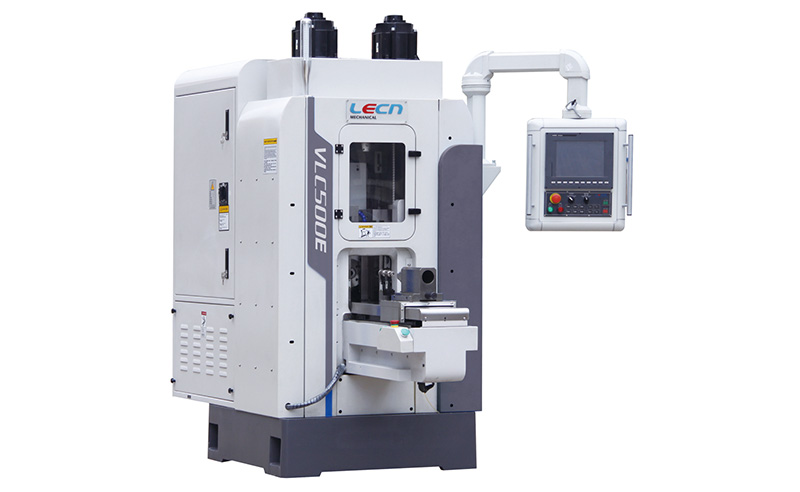Oct. 13, 2025
Rolling machines — also known as roll forming machines, plate rolling machines, or sheet metal rollers — play a crucial role in modern industrial production. These versatile machines transform metal sheets into cylindrical, curved, or conical shapes through controlled pressure and bending. From heavy manufacturing to precision engineering, rolling machines have become indispensable tools across multiple industries worldwide.
A rolling machine is a piece of equipment designed to deform metal materials into desired shapes using a series of rolls. Depending on the structure and function, rolling machines can be divided into:
Plate rolling machines (used for forming cylindrical parts)
Section rolling machines (for I-beams, channels, and angle steel)
Sheet rolling machines (for thin sheet metal forming)
Roll forming lines (for continuous production of profiles and panels)
These machines vary in capacity and precision — from compact CNC-controlled models used in electronics manufacturing to large-scale hydraulic systems found in shipyards and power plants.

1. Construction and Infrastructure
In the construction industry, rolling machines are essential for producing steel beams, columns, and structural frames. They are widely used to manufacture components for:
High-rise buildings
Bridges and tunnels
Prefabricated steel structures
Roofing sheets and wall panels
Roll forming lines enable continuous production of metal profiles used in roof decking, wall cladding, and purlins (C & Z shapes) with high consistency and strength.
Why It Matters: The ability to roll structural steel efficiently helps reduce material waste and ensures precision in large-scale construction projects.
2. Automotive and Transportation Industry
In the automotive sector, rolling machines are used to produce body panels, chassis parts, bumpers, and exhaust components. Advanced CNC rolling systems can handle lightweight alloys like aluminum and high-strength steel, crucial for modern electric vehicles (EVs).
Key Applications Include:
Rolling thin metal sheets for car body panels
Forming tubular structures for frames and exhaust systems
Producing precision-engineered parts with high dimensional accuracy
Trends: The rise of lightweight vehicle design and electric vehicle manufacturing is driving demand for automated rolling systems capable of working with complex alloys.
3. Energy and Power Generation
Rolling machines are widely used in the fabrication of pressure vessels, boilers, and wind turbine towers. In thermal and nuclear power plants, large-diameter rolling machines shape thick steel plates into cylindrical shells used for:
Boiler drums
Heat exchangers
Gas storage tanks
Wind turbine towers
Advancement Highlight: Hydraulic 4-roll machines now allow for multi-pass precision forming, minimizing rework and enhancing productivity in large component manufacturing.
4. Shipbuilding and Marine Engineering
Ship hulls, fuel tanks, and curved deck structures rely heavily on rolling technology. Rolling machines capable of handling extra-wide, thick steel plates are essential for shaping curved sections of a ship’s body.
Benefits:
Improved shape accuracy for large vessels
Enhanced structural integrity of hull components
Reduced welding requirements due to precise curvature
Emerging Trend: Many shipyards are adopting CNC-controlled 3-roll bending machines integrated with laser measurement systems to improve forming accuracy.
5. Aerospace and Defense
In aerospace applications, precision rolling machines produce components that demand extreme accuracy, such as engine casings, fuselage frames, and rocket body structures.
These machines are designed to roll lightweight materials like titanium alloys and aluminum-lithium composites, ensuring optimal strength-to-weight ratios.
Industry Advantage: CNC rolling ensures repeatability, material traceability, and tight tolerance control, all critical for aerospace safety and performance.
6. Oil, Gas, and Chemical Processing
The oil and gas industry relies on rolling machines to fabricate pipelines, pressure vessels, and storage tanks that can withstand high pressure and corrosion.
Common Applications:
Rolling stainless steel and carbon steel plates for pipeline systems
Forming chemical reactors and storage tanks
Manufacturing cylindrical shells for refineries and offshore platforms
Innovation Trend: Integration of automatic plate alignment systems and edge pre-bending technology reduces manual labor while improving forming precision.
7. HVAC and Metal Furniture Manufacturing
In the HVAC (Heating, Ventilation, and Air Conditioning) sector, rolling machines produce ductwork, air-conditioning shells, and ventilation pipes.
For metal furniture production, they help form chair frames, table legs, and decorative components with smooth, uniform curvature.
Advantages for Small Manufacturers:
Compact, electric-powered rolling machines offer affordable and energy-efficient solutions for small-scale operations, enabling consistent output without heavy hydraulic systems.
Technological Advancements in Rolling Machines
Modern rolling machines are evolving rapidly with automation, digitalization, and precision control. Key innovations include:
CNC control systems for programmable accuracy
Hydraulic pre-bending technology to eliminate plate edge distortion
Intelligent sensors for thickness and angle monitoring
Integration with robotic arms for fully automated production lines
Energy-efficient electric drives replacing traditional hydraulic systems
These advancements not only improve forming accuracy but also reduce material waste and enhance operational safety.
The global market for rolling machines is projected to grow steadily as industries move toward automation and sustainable production. Demand will rise particularly in:
Renewable energy (wind and solar equipment manufacturing)
Electric vehicle production
Prefabricated building systems
High-precision metal forming for aerospace and defense
Manufacturers that adopt smart control systems, IoT connectivity, and modular automation will gain a competitive advantage in the next decade.
Rolling machines are the backbone of metal forming industries, offering unmatched versatility, precision, and efficiency. From construction steel and automotive components to aerospace alloys, their role spans across virtually every industrial sector.
As technology advances, the next generation of rolling machines will be smarter, greener, and more adaptive — supporting the global shift toward intelligent manufacturing.
Previous: None
Next: None